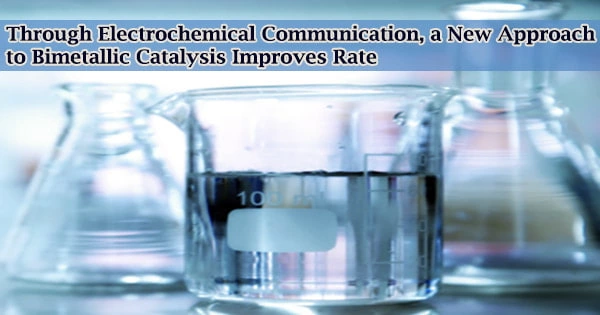Catalysts, which speed up and improve the efficiency of chemical reactions, are employed in the manufacturing of most of the chemicals we use on a daily basis, including fuel, fertilizers, and even margarine.
What is the issue? Many of these catalytic reactions consume a lot of energy, which is usually in the form of heat, and produce toxic byproducts. Furthermore, the majority of these items are still made with fossil fuels.
Researchers from Lehigh University in the United States and Cardiff University in the United Kingdom have developed a bimetallic catalysis technique that uses gold and palladium nanoparticles on a conductive support, which could lead to new design pathways for greener production of renewable bio-based fuels and chemicals.
The results of this partnership were recently published in the journal Nature in a piece titled “Au-Pd separation accelerates bimetallic catalysis of alcohol oxidation.”
Steven McIntosh, Department of Chemical and Biomolecular Engineering, and Christopher Kiely, Department of Materials Science and Engineering, both of Lehigh University, and Graham J. Hutchings, Max Planck-Cardiff Centre on the Fundamentals of Heterogeneous Catalysis FUNCAT, both of Cardiff University, are among the authors.
Gold and palladium are two of the most promising elements for converting bio-derived compounds to usable chemicals in catalysts. According to McIntosh, the secret is that each element is active for various reaction steps in the upgrading process.
There was a dramatic increase in rate? Above the rate of each one separately? when the two different types of particles were placed together on conducting support enabling the electron transfer between them. Unraveling why this happens took a huge amount of very thorough research, checking and rechecking hypotheses until we reached the conclusions presented in this paper.
Steven McIntosh
Gold is active for alcohol dehydrogenation but not for oxygen reduction in this situation. Palladium is the polar opposite of platinum. According to him, these components are frequently mixed into single particles to generate a “compromise” catalyst.
The surprising increase in bimetallic catalytic activity discovered by McIntosh and his colleagues is due to particles of each element “talking” to each other via electron transfer through the conducting support.
They demonstrate how, by separating the gold and palladium components in bimetallic carbon-supported catalysts, they achieved almost double the reaction rate compared with that achieved with the corresponding alloy catalyst.
“There was a dramatic increase in rate? Above the rate of each one separately? when the two different types of particles were placed together on conducting support enabling the electron transfer between them,” says McIntosh.
“Unraveling why this happens took a huge amount of very thorough research, checking and rechecking hypotheses until we reached the conclusions presented in this paper.”
The collaboration brought together electrocatalysis and thermal catalysis to understand and design novel catalyst systems.
“This hybrid approach meant that we could not only understand where the particles were on the support materials but also bring electrochemical techniques to bear to demonstrate the mechanism and driving forces for this process,” says McIntosh.
This discovery could provide a pathway to design and understand similar bimetallic catalyst systems for a wide range of reactions, says McIntosh, adding:
“It has the potential to change the way experts think about the design and creation of these catalysts for many applications? in this case, for the green production of bio-derived chemicals and fuels.”





